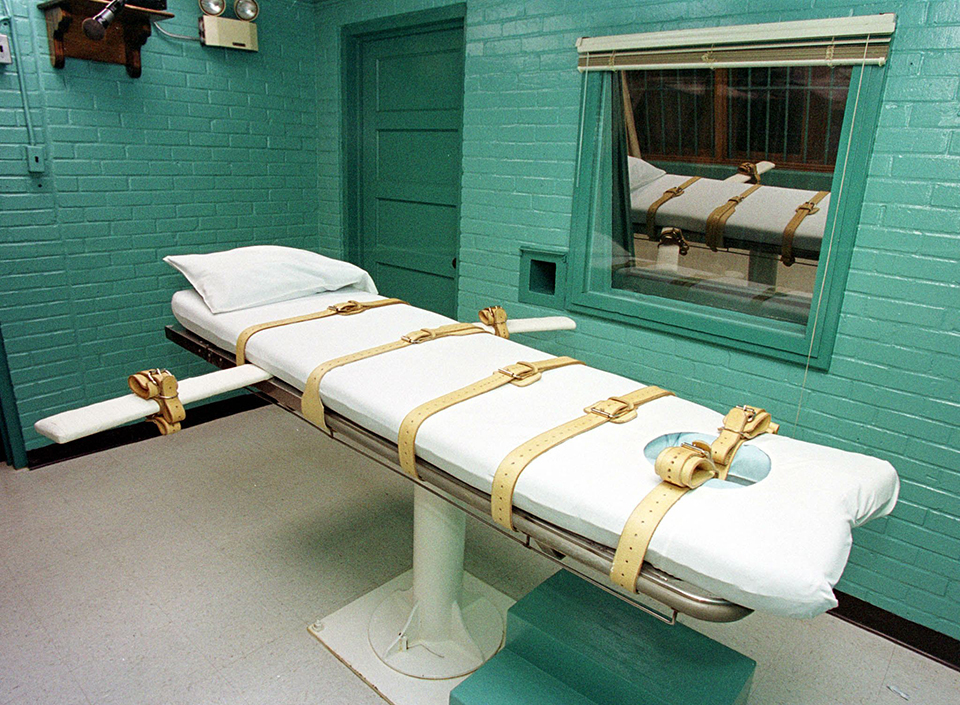Nineteen bills have been filed so far in the Texas Legislature in 2009 that relate directly with capital punishment.
If you want to see a list of bills filed dealing with capital punishment, click here.
The newest ones on the list include HB 913 to create a commission to study capital punishment in Texas and to enact a moratorium on executions, filed by Rep Harold Dutton; another bill (HB 938) by Dutton would require electronic recordings of confessions in capital cases obtained as a result of custodial interrogations.
Number of Bills: 19
| HB 111 | Author: | Pena |
| Last Action: | 11/10/2008 H Filed | |
| Caption: | Relating to the joint or separate prosecution of a capital felony charged against two or more defendants. |
| HB 297 | Author: | Dutton |
| Last Action: | 11/19/2008 H Filed | |
| Caption: | Relating to the abolition of the death penalty. |
| HB 298 | Author: | Dutton |
| Last Action: | 11/19/2008 H Filed | |
| Caption: | Relating to the admissibility of certain evidence in capital cases in which the state seeks the death penalty. |
| HB 304 | Author: | Dutton |
| Last Action: | 11/19/2008 H Filed | |
| Caption: | Relating to the extent of a defendant’s criminal responsibility for the conduct of a co-conspirator in certain felony cases. |
| HB 682 | Author: | Farrar |
| Last Action: | 01/20/2009 H Filed | |
| Caption: | Relating to abolishing the death penalty. |
| HB 788 | Author: | Thompson |
| Last Action: | 01/26/2009 H Filed | |
| Caption: | Relating to the creation of a commission to investigate and prevent wrongful convictions. |
| HB 825 | Author: | Hochberg |
| Last Action: | 01/27/2009 H Filed | |
| Caption: | Relating to prohibiting deferred adjudication community supervision for a defendant convicted of murder. |
| HB 877 | Author: | Naishtat |
| Last Action: | 01/29/2009 H Filed | |
| Caption: | Relating to the creation of a commission to study capital punishment in Texas. |
| HB 913 | Author: | Dutton |
| Last Action: | 01/30/2009 H Filed | |
| Caption: | Relating to the creation of a commission to study capital punishment in Texas and to a moratorium on executions. |
| HB 916 | Author: | Dutton |
| Last Action: | 01/30/2009 H Filed | |
| Caption: | Relating to standards for judicial review of certain writs of habeas corpus in capital cases. |
| HB 921 | Author: | Dutton |
| Last Action: | 01/30/2009 H Filed | |
| Caption: | Relating to jury selection in capital cases. |
| HB 938 | Author: | Dutton |
| Last Action: | 01/30/2009 H Filed | |
| Caption: | Relating to the admissibility of certain confessions in capital cases. |
| HJR 24 | Author: | Naishtat |
| Last Action: | 11/10/2008 H Filed | |
| Caption: | Proposing a constitutional amendment relating to a moratorium on the execution of persons convicted of capital offenses. |
| SB 115 | Author: | Ellis |
| Last Action: | 11/10/2008 S Filed | |
| Caption: | Relating to the creation of a commission to investigate and prevent wrongful convictions. |
| SB 165 | Author: | Ellis |
| Last Action: | 11/10/2008 S Filed | |
| Caption: | Relating to an annual report and analysis by the Office of Court Administration regarding cases involving the trial of a capital offense. |
| SB 167 | Author: | Ellis |
| Last Action: | 11/10/2008 S Filed | |
| Caption: | Relating to the applicability of the death penalty to a capital offense committed by a person with mental retardation. |
| SB 169 | Author: | Ellis |
| Last Action: | 11/10/2008 S Filed | |
| Caption: | Relating to the authority of the governor to grant one or more reprieves in a capital case. |
| SB 426 | Author: | Shapleigh |
| Last Action: | 01/07/2009 S Filed | |
| Caption: | Relating to the electronic filing of documents for capital cases in the court of criminal appeals. |
| SJR 7 | Author: | Ellis |
| Last Action: | 11/10/2008 S Filed | |
| Caption: | Proposing a constitutional amendment authorizing the governor to grant one or more reprieves in a capital case. |











